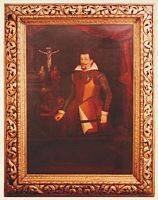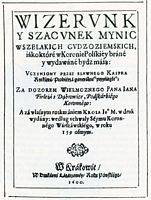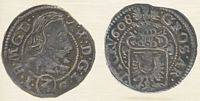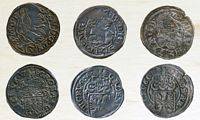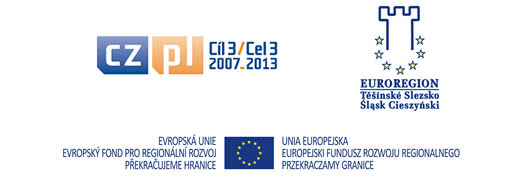Minting during the rule of Prince Adam Wenceslas (1579-1617)
After the death of Prince Wenceslas in 1579 the minting of Cieszyn coins once again ceased. Yet it was not forgotten. In 1590 during the regency of Princess Catherine Sidonia the Cieszyn gentry interested in increasing the Princess’ income reminded her that the right to mint was the ancient privilege of every ruler. Therefore they insisted on resuming minting their own coins which they claimed were better than the Polish coinage circulating in Silesia.
Indeed the Cieszyn mint was reactivated during the regency of Catherine Sidonia although it was held on behalf of her son and the successor of Prince Wenceslas, Prince Adam Wenceslas who began ruling in his own right in 1594. The first mint master of that period whose name was recorded was Nicholas Hevela de Calpino, who worked in Cieszyn between 1591 and 1592. He was the son of Nicholas Hevela of Gdańsk (Danzig), who in turn may have been a relative of the famous astronomer, Johannes Hevelius. Nicholas Hevela senior styled himself nobilis de Colpino, probably taking his name from the estate in Kiełpino near Gdańsk. Between 1585 and 1586 he administered the royal mint in Olkusz where his son became an assayer in 1586. Two issues of 3 groschen coins (trojaki) minted in Cieszyn by Nicholas Hevela de Calpino dating from 1591-92 are known. Although they have similar iconography it is clearly evident they demonstrate the work of two different craftsmen. Both obverses bear the bust of the young Prince, at that time aged twelve or thirteen, with a Spanish-style ruff collar and the legend within the border reading ADA.W.D.G. D.TESSI.ET.MAI.GLO. which stands for Adam Wenceslaus, by the Grace of God, Prince of Cieszyn and Wielki Głogów. In the upper part of the reverse is the Cieszyn eagle reduced in size with a date across the field, while the inscription reading GROS.ARG.TRIP. DVCIS.TESSINENSIS, which indicates that it is a 3 groschen coin of the Cieszyn Prince, takes up the rest of the space. The coin is worth 3 Silesian groschens so its nominal value is equal to a Polish trojak although it is lighter.
The next Cieszyn mint master was called Kasper Rytkier (or Rietker) the coins of whom, dating from 1596-97, have been catalogued. He was a burgher from Königsberg who had been mint master in Olkusz between 1585 and 1594 and then in Lublin in 1595. He minted 3 kreutzer coins issued in 1596 and 1597 which are quite similar to 3 groschen coins of 1591-92, the only difference being the portrait of the Prince as a slightly older man on the obverse. The border legend presents his titles still laying his claim to Wielki Głogów. The denomination mark of a figure 3 appears in the exergue of the obverse breaking the legend in accordance with the Austrian ordinance. The denomination is repeated twice more on the reverse; the inscription reads in full MONETA NOVA ARGENTEA TRIVM CRVCIFERORVM and the Roman numeral III appears in the exergue. Very little space was then left for the small eagle at the top. The 3 kreutzer coin belongs to the Austrian monetary system which the Habsburgs systematically introduced in their dominion of Silesia. The system was based on a kreutzer worth one third of an imperial groschen i.e. equal to 1 groschen. At the same time the coin accurately imitates Polish coins of 3 groschens (trojaki); the portrait of the Prince in a ruff collar resembling older images of the young Sigismund III. So here again we come across the custom which was intended to make a dishonest profit since the Cieszyn 3 kreutzer coin weighing 2.1 g was worth much less than the Polish trojak. At the same time Rytkier also minted 3 groschen coin (issued in 1596 and 1597) weighing 2.6 g which resembled older editions of that coinage from 1591-92. Once again they imitated Polish trojaki. In 1596 he also issued 3 heller coin bearing a helmet decorated with the eagle and laurel wreath on the obverse, and another eagle on the reverse.
After working for a brief period in Cieszyn Kasper Rytkier returned to Poland where he was appointed official mint assayer. His duties included limiting the damage caused by poor coinage and counterfeits put into circulation by neighbouring countries and inundating the Polish economy. In 1600 under orders from the Polish Sejm Rytkier published his work entitled Wizerunek i szacunek mynic wszelakich cudzoziemskich (The Condition and Assessment of Divers Foreign Mints). The book was written to help with the evaluation of the coinage coming to Poland, most often of poorer quality in comparison to their Polish equivalents and therefore ‘driving out’ the more superior Polish currency according to the principle formulated by Nicholas Copernicus. Rytkier’s work presents 144 examples of various groschens and poltoraks (worth about 1 1/2 Polish groschens). Most of them were struck in Germany, the Alpine countries and the Netherlands, but in a few cases also in Silesia. The group of groschens includes 2 kreutzer coins issued in 1570 by Frederick Casimir, the Prince of Bielsko and Fryątát, and the groschen of Prince Wenceslas dating from 1560 depicting St. Nicholas. According to Rytkier, if the first coin had been valued as equal to the Polish groschen one would have lost 20 zlotys and 15 groschens on every hundred zlotys. The second coin was not even worth half a Polish groschen therefore the loss on a hundred zlotys was 58 zlotys and 10 groschens. The fact that coins struck by Rytkier in Cieszyn were no better adds piquancy to the situation.
Valentin Jahns (his name was sometimes spelled Janus or Jonas) was another Cieszyn mint master. He worked for Prince Adam Wenceslas for a longer period i.e. between 1603 and 1608. Jahns came from Goslar, and had been mint master in Poznań, Bydgoszcz and Wschowa. There is a contract dated 1604 on the strength of which the Prince rented the Cieszyn mint to Jahns for two years in exchange for 300 thalers per year. The mint master was also obliged only to use wood from the princely forests. In return the Prince offered his guardianship and privileges reserved for mint masters. The contract refers to ”his” i.e. the mint master’s mint or workshop (seinem Münczhause, sein Münczhauß oder Stelle). It also contains an explicit instruction to the town authorities not to interrupt the mint master in any way on pain of falling out of favour. It suggests that Jahns’ mint was located on land belonging to the town and not to the Prince.
Notwithstanding Jahns minted 3 kreutzer coins with the Prince’s bust depicted with long, flowing hair as early as 1603. The portrait is very poorly rendered on the coins of the first issue struck with a signed die featuring crossed hooks (the mint master mark used by Jahns on his coinage minted in Poznań). It might only have been an essay. The same year a much better 3 kreutzer coin was minted. Apart from the denomination mark (GROS.ARG-III-CRV) and the date the reverse bears the Cieszyn eagle on a heraldic shield with a helmet above it decorated with mantling and an eagle in a crest. The obverse depicts the bust of the Prince. Jahns struck a few issues of this coin which differ in the details of the Prince’s portrait. For instance on a 3 kreutzer coin minted in 1607 the Prince is depicted in a doublet, those struck in 1608 bear a military bust; sometimes he has a moustache, and sometimes a beard. His princely titles were also embellished although they are given as initials; A.W.D.G.I. (3) S.T.E.M.G.D stands for Adamus Wenceslaus Dei Gratia in Silesia Teschinensis et Maioris Glogovie Dux, the three being the denomination mark. In 1607 Jahns minted a 2 kreutzer coin bearing Prince Adam Wenceslas’ portrait in a cap, on this occasion a gold coin weighing 1.5 g. In fact only the denomination mark distinguished it from the design of the obverse and reverse of the 3 kreutzer piece.
Jahns’ workshop also issued some small coinage which were so called trzeciaki minted from 1604. They weighed 0.6 g and were worth 3 hellers which gradually became similar to so called groszyki i.e. greschels. Both sides bore heraldic symbols; the obverse a helmet decorated with a laurel wreath and a coronet, with an eagle placed above it, and the reverse a decorated shield with the Cieszyn eagle.
Between 1605 and 1606 Jahns had an assistant by the name of Michael Hake.

